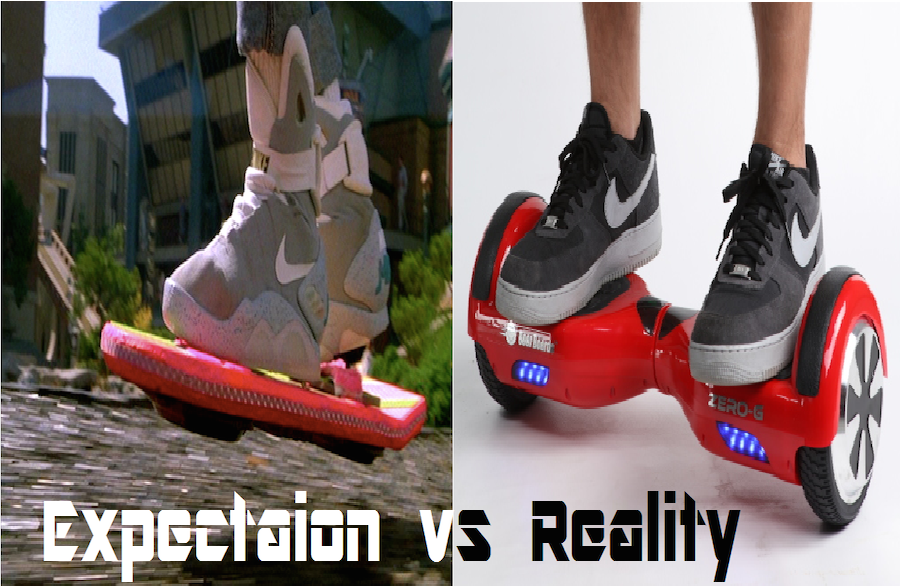Where Are the Flying Cars and Real Hoverboards?
January 13, 2016
It’s 2016, a new year! Time to look back at all that was accomplished in 2015… which was nothing like the people of the past predicted. Inspired by a CollegeHumor video called “Back To The Future In ACTUAL 2015”, it seems that Marty McFly’s of the modern world did not match up with today’s actual instances of society.
What was predicted for society way back when? Back in the Victorian Era (1837 – 1901), Europeans expected the future to have moving sidewalks, people walking on water, and machines able to control the weather. Airports and some malls such as the Mall of America have moving sidewalks to make transport easier. However, impersonating Jesus and Mother Nature have not become as popular and widespread as previously thought.
To reference a more modern time, Los Angeles believed there would be robot butlers and maids and dogs. Household items have more robotic features and can be controlled by phone apps, but they were still off in 1988, which was a year before Back to the Future hit silver screens. California native and YouNow personality, Waleed Areiquat mused, “How cool would it be if we had robots to do everything for us? It’d be fun, but we’d get really fat.”
In Back to the Future 2, the characters showed up October 21, 2015. On the positive outcome of society’s grown, we have gone through so many technological advances with the constant innovation of smartphones and the like. We have failed to create and have general use of flying cars or self tying shoelaces.
The biggest let-down would have to be hoverboards. Instead of zipping through the air, our boards keep us earth-bound. The car company Lexus is currently working on making their own version called “Slide”.
Then again we’ve proved the past wrong in thousands of ways including the rise and evolution of computers as well as growth in the medical field. Phones are now able to use “biometric identification” as pass codes and we can play spy with watches that do actually communicate with the wearer. In the last 50 years, stem cells can repair damaged tissue, HIV can be treated with Atripla (three anti-retroviral drugs put into a singular pill), and bionic arms can replace lost limbs.
Who knows what 2016 will bring?


